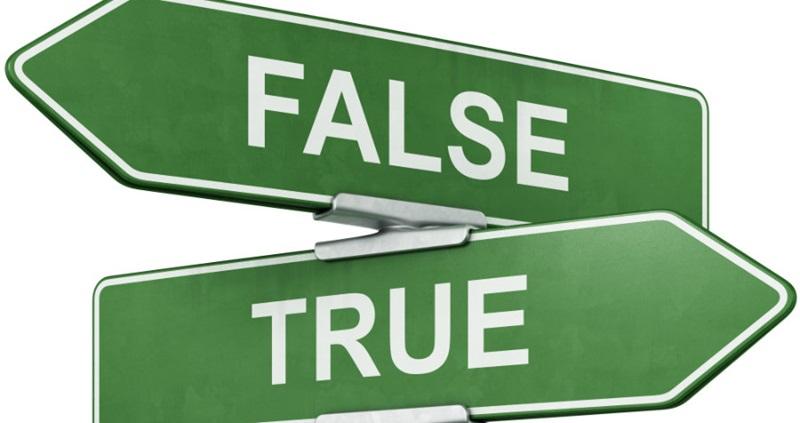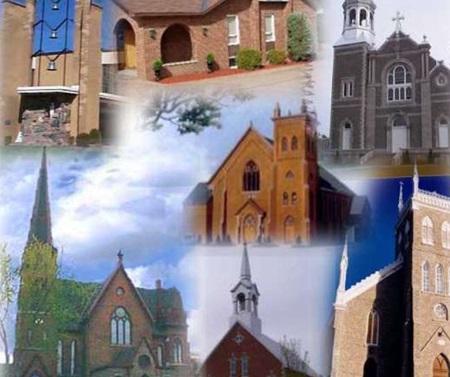Easily Recognized and Distinguished
Easily Recognized and Distinguished

True and False⤒🔗
When the terms “true” and “false” are used with respect to a certain church, it must be understood that such language is not an innovation of liberated Reformed people. The distinction between the true and the false church is confessed in Article 29 of the Belgic Confession. This article carefully lists the marks of the true and the false church, so that believers are able to distinguish between the one and the other. This is important, according to our confession, because it is the calling of believers everywhere to separate themselves from the false church and be joined to the true church of Christ (Article 28).
There is ample biblical evidence for the confessional distinction between the true and the false church. We may not find one single text which neatly makes this distinction and conveniently lists the marks, but “the line of the true and the false church goes through the whole Scriptures”, as Dr. K. Schilder once wrote.
The warnings against false prophets (for example in 1 John 4: I), false doctrines (in Colossians 2:8 and 20), and the “harlot of Babylon” (in Revelation 18) make clear that not everything which claims to be true is indeed true. Often the heretics and heresies come not from the side of the world, but out of the church itself, as Paul warns the elders of Ephesus, “… and from among your own selves will arise men speaking perverse things, to draw away the disciples after them” (Acts 20:30).
The Belgic Confession therefore states that we,
ought to discern diligently and very carefully from the Word of God what is the true Church, for all sects which are today in the world claim for themselves the name of Church.
I do not know of any other creed which is so specific about the marks of the true and the false church. The Westminster Standards, to use a prominent example, speak in much milder terms about more or less pure churches, some of which may have so degenerated that they have become a “synagogue of Satan.” But these Standards do not make the clear distinctions as is done in the Belgic Confession. Some Presbyterians therefore have a rather vague and broad concept of the church.
Still Today←⤒🔗
Now the question which intrigues us in this editorial is whether this distinction between the true and the false church is still valid and functional today in our modern ecclesiastical situation. It has been argued that Article 29 of the Belgic Confession may have been true in 1561, when Guido de Bres wrote it. Things were much simpler in those days, we are told. But in our current and complex situation, it is not so easy anymore to speak conclusively about churches in terms of “true” and “false.”
The above is said to hold true especially with respect to the last sentence of Article 29, where we confess, “These two Churches (that is, the true and the false Church, Cl. S.) are easily recognized and distinguished from each other.” That may have been the case in 1561, but is it still true today in 1992? In our time we are faced not only with the consequences of the great Reformation, but much other subsequent secession as well. There are many similar “Reformed” churches, having the same creeds and yet special “distinctives.” Sometimes the differences between these churches are minor and difficult to detect. Therefore, many Reformed people today take the last line of Article 29 with a grain of salt. It's just not so easy anymore today.

It has even been argued that Article 29 does not give us any lasting norms but only a sketch of a certain time. In response to this, Prof. J. Kamphuis has maintained that our confession also in Article 29 does not just speak about a historical situation, but summarizes what the church believes on the basis of the Scriptures for the entire latter days (Verkenningen I, Oosterbaan & Le Cointre, Goes, 1963, page 7ff.). Article 29 does not give us “one moment in time” but the lasting norms of God! Therefore it is essentially also true today that the true and the false church as easily recognized and distinguished.
Would it really be harder today than four hundred years ago on the basis of God's Word to distinguish between faithfulness and unfaithfulness? Does Christ's word not hold true also in our time that the tree is known by its fruits. Yes, especially in our time of which it has been said,
The coming of the lawless one by the activity of Satan will be with all power and with pretended signs and wonders, and with all wicked deception for those who are to perish because they refuse to love the truth and so be saved.2 Thessalonians 2:9
As time progresses, will it really become more difficult or easier for those who love the Lord and know His Word to distinguish between the true and the false church? We are exhorted with Timothy to continue in what we have learned and have firmly believed (2 Timothy 3:14) and so to distinguish between true and counterfeit faith.
Easily not Rashly←⤒🔗
The true and the false church, then, are also today still easily recognized and distinguished. But this does not mean that we may quickly and rashly apply labels. We must look at all the facts in the light of Scripture. The same Article 29 warns us that we must “discern diligently and very carefully from the Word of God what is the true Church…” It takes a lot of diligent investigation and careful study, based on scriptural norms, to come to well-founded conclusions. We are to avoid rash judgments.
We must also consider another important aspect here. It is clear that all of the churches addressed in the New Testament were not perfect. Some churches did not at all display constant faithfulness to the marks of the true church. Are they immediately called “false”? No, they are not. But the warning is issued that if such churches do not repent, they will be cast out. Christ warns the church at Smyrna that if His admonition is not followed by repentance,
I will come to you and remove your lamp stand from its place …Revelation 2: 5
A church becomes “false” when it obstinately, after many warnings, refuses to repent and rejects the clear call to reformation! Our Lord does not gather on earth a perfect church, but He does gather a church which despite all weaknesses and failure is faithful to His will.
This should make us careful and sensitive when speaking about other churches. As I wrote in 1979 in Everything in Christ, “The confession states that these two Churches are easily recognized and distinguished. This will, however, be clearer in one case than another, since the process and extent of deformation is not everywhere the same.” Much study and patience are required in dealing with each other on these points.

At the same time we should not be afraid, when the facts cannot be denied, to discern diligently and speak brotherly in clear terms to those who are members of a church that is unfaithful and becoming false. It is no judgment of persons when we on solid biblical grounds consider the institution of which they are members to be false. It is no sign of sectarian smugness. On the contrary, such speaking is a sincere seeking in love of the unity of faith.
Even if it hurts, better is open rebuke than hidden love. Faithful are the wounds of a friend; profuse are the kisses of an enemy.Proverbs 27:5, 6
Those who really care will speak the truth, also today, about the true and the false church which are indeed still by God's own revealed norms easily recognized and distinguished.

Add new comment